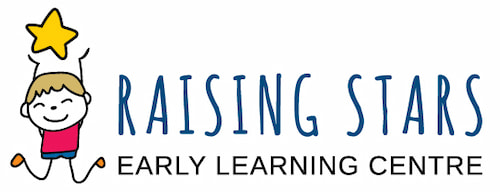Kids Yoga
Yoga offers children valuable development opportunities across physical, emotional and mental learning areas.
In particular, child psychology studies have noted that kids yoga provides children with the tools necessary for remaining centred and focussed during stressful or challenging times. This is a critical skill for building school readiness, as well as laying the foundations for a patient and respectful child.
By incorporating a yoga program into an early childhood learning curriculum, kids can engage with valuable learning opportunities and emotional growth in a fun, engaging way.
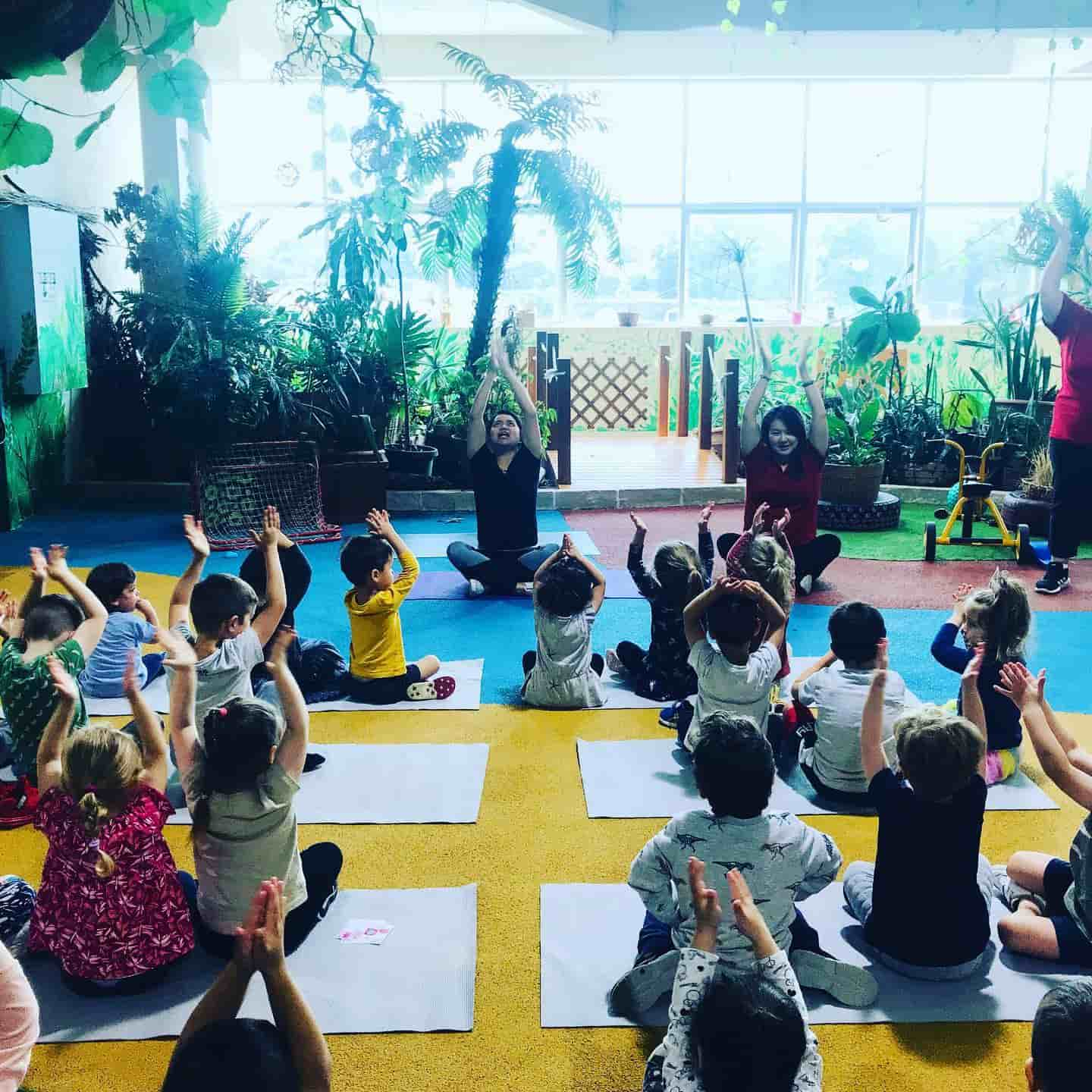
Yoga for Kids: How Does it Work?
When teaching kids yoga, it is essential to consider that it is not simply just a reduced version of adult yoga. Instead, yoga classes for kids should be enjoyable, focussing on engaging children’s concentration in a fun way to build their interest and confidence.
In kids yoga, there are 3 key areas that early childhood educators should aim to target:
- Stretching through poses
- Breathing exercises
- Mindfulness meditation
1. Stretching
Within this vital practice, educators explicitly teach basic yoga poses to stretch and strengthen kids’ growing bodies. Educators should challenge the child to test their flexibility and mobility through particular yoga poses, encouraging an understanding of body awareness. As a result, children can develop their strength and balance through conditioning their bodies.
An important consideration is not to overwhelm the child, as this could hinder their confidence and lead to disengagement with yoga classes. Therefore, early childhood educators should assess the children’s physical capacity before selecting achievable poses.
Yoga Poses for Kids
The best way to engage kids’ interests in yoga is to provide a variety of poses. Educators should include more accessible and achievable poses to help build child confidence. Some easy yoga poses include:
- Chair pose: in a standing position, have the child bend the knees to lean into their heels as if they are sitting on a chair. Then, the child should raise their arms above the head. This pose helps strengthen kids’ thigh and calf muscles.
- Superman pose: the child should lie flat on the stomach with stiffened legs and arms. Encourage the child to raise their chest, legs and arms as high as possible so that they look like Superman flying through the air. This helps develop kids’ shoulder, leg and core strength.
- Banana pose: in a standing position, have the child raise their arms above their head with their palms placed together. Encourage the child to lean from one side to the other to look like a banana. The exercise helps develop balance and strengthens lower back muscles.
Meanwhile, successful yoga programs also incorporate fun ways to teach yoga positions. Educators can achieve this by relating poses to animals. For example, some animal yoga poses for kids are:
- Cow pose: the child should be on all fours with their head facing forward to look like a cow. Encourage the child to suck in their stomach while also pushing out their lower hips, so their back is arched inwards. This helps raise body awareness, as well as improve coordination and strengthen hip muscles.
- Seal pose: the child should be lying on the floor with their palms planted flat on the floor shoulder distance apart. Then, with their hips still connected to the floor, tell the children to raise their upper body using their arms. This will help stretch the child’s lower back.
- Whale pose: lying on their back with their knees bent and soles of their feet planted flat on the floor, encouraging the child to lift their hips towards the sky. The child’s feet, upper back, shoulders, and head should still be on the floor while their hips are raised. The whale pose is excellent for stretching a child’s neck and spine while also strengthening leg muscles.
Partner activities are another way to engage children and pique their interests. Partner yoga poses for kids can include:
- Lizard on a rock pose: One child should place their knees and forehead on the floor, resting their buttocks against their heels. The child’s head should be tucked between the knees with their arms resting comfortably down the side of their body, giving the impression that they are a rock. Once comfortable, have the other child place their feet flat on the floor and plant their buttocks on the rock’s lower back. Encourage the child to recline back so their head rests on the rock’s upper back, allowing for spinal stretching.
- Seesaw pose: Sitting down, the children should be facing each other with their legs extended and feet touching. The children then need to hold each other’s hands to support each other. Once connected, encourage the children to lean backwards and forwards over their legs, pretending to be a seesaw. This partner yoga pose helps stretch their hamstrings and develop their core strength.
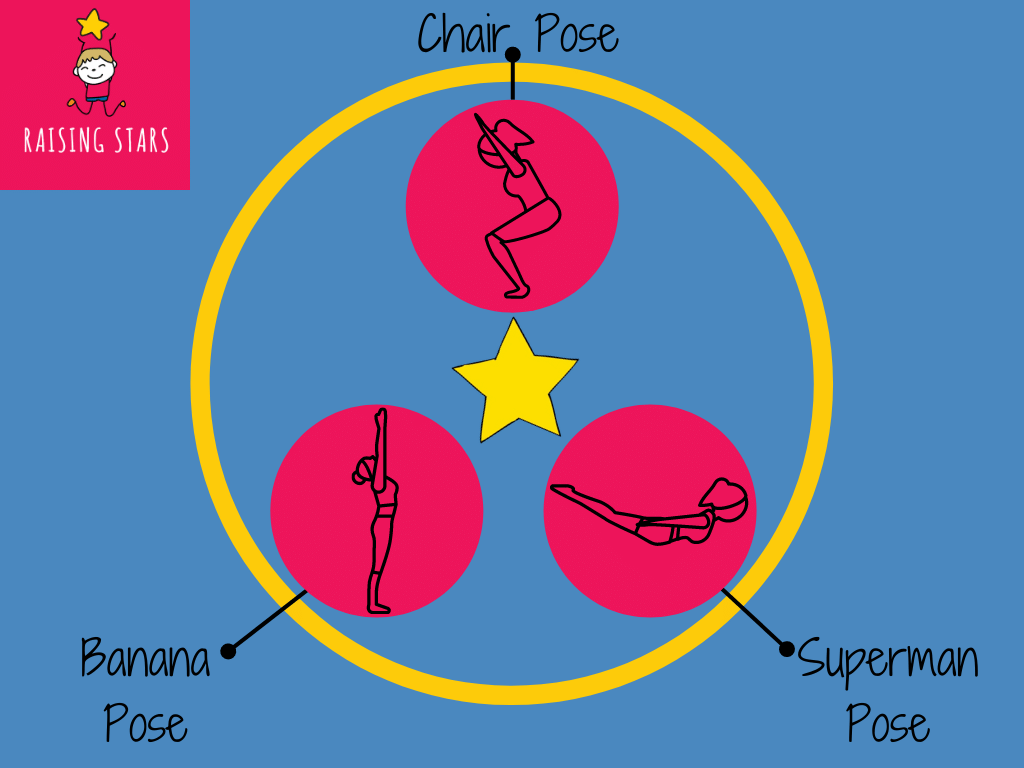
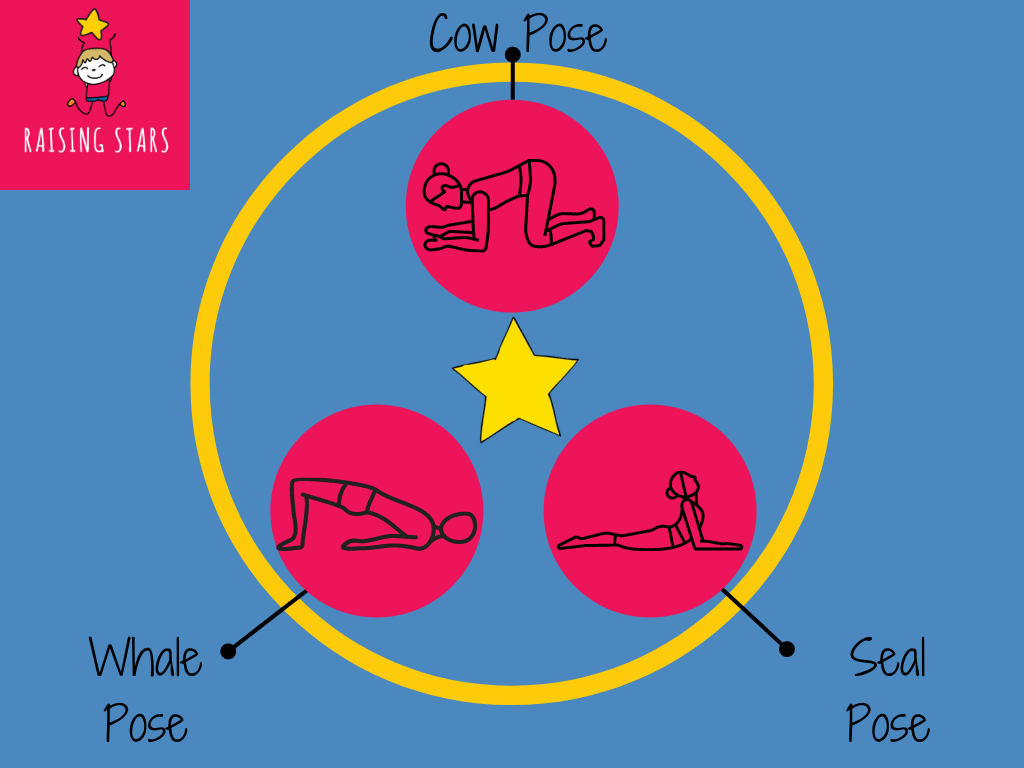
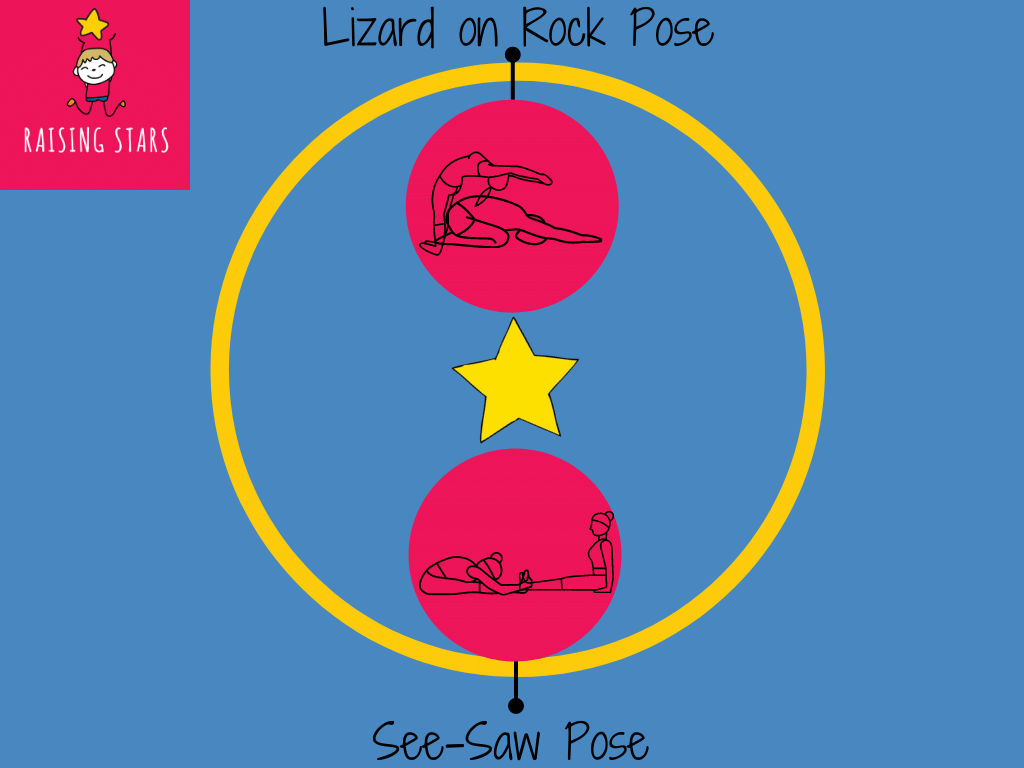
2. Breathing Exercises
The power of controlled breathing is a critical tool for stress management. Breathing is a pillar practice in yoga, which is proven to aid our ability to control our mind, reduce anxiety and manage our emotions.
Kids yoga introduces children to this concept, teaching them to use their breath to calm their stressful minds. As a result, breathing exercises can help equip children with valuable techniques for managing tantrums and enhancing their emotional development.
Some ways to engage children with breathing exercises can include:
- Imaginative play: Have the children pretend that they are a dragon practising their ‘fire breath’, encouraging them to inhale and exhale deeply.
- Props: Use a straw to have the children sip the air, provoking them to notice the sensation of deep breathes through the mouth and out the nose.
- Games: The bumble-bee game is a good way in engaging all the children to practice breathing exercises. Have the kids sit in a circle and plug their ears with their fingers. Breath in through the nose and exhale through the mouth, making a cohesive humming noise.
3. Meditation for Kids
Meditation for kids is a significant opportunity for teaching them about the value of mindfulness. The practice of meditation targets a child’s cognitive growth by helping develop concentration and focus-related abilities.
Furthermore, early exposure to mindfulness helps emotional development by encouraging children to reflect on their emotions and feelings.
Of the three yoga for kids practices, meditation is the most challenging to execute as it is less engaging. Therefore, meditations sessions should be brief and straightforward.
Some tips to help establish a calming environment for meditation include:
- Dimming the lights.
- Asking the children to close their eyes and remain silent.
- Encourage the children to notice different sounds or sensations.
- Provoke the children to think about someone they love and why.
Such prompts will help expose children to concepts of mindfulness as well as lay an important foundation for emotional and cognitive development.
Teaching Kids Yoga
Yoga programs for kids need to include plenty of variety that combine practices of stretching, controlled breathing and mindfulness meditation with a fun and engaging approach. This can be achieved through introducing stories, music, videos, games and other imaginative play elements into the class.
Furthermore, time and frequency are also essential to maintain a high level of child engagement. Finding the right balance of frequency is critical for maintaining children’s interests. It is often found that one class per week offers the best results. Meanwhile, the class length ultimately depends on the child, with times varying according to age – for example:
- 1-2 years: 15 minutes
- 2-3 years: 30 minutes
- 3-5 years: 30 minutes
Ultimately, the best practice for kids yoga classes requires educators to place the children’s interests at the forefront of their minds. This will allow for an engaging early learning environment that teaches children fundamental yoga practices in a fun way.
Benefits of Yoga for Children
Multiple studies note that children who participate in yoga programs in early learning centres are offered various opportunities for extending their emotional, mental and physical development.
As a result, kids can enjoy several benefits such as:
- Understanding the value of harmony between body and mind.
- Increasing children’s physical capacity through developing their endurance, flexibility, mobility, muscle strength, balance and coordination.
- Providing a sense of peace, tranquillity and calmness to a child’s busy lifestyle.
- Learning the value of patience and understanding of others.
- Building the foundations for self-disciple by resisting the temptations of distraction.
- Heightening body awareness and comprehension of the space that they occupy.
- Discovering the power of mindfulness.
- Constructing a more profound sense of self and their emotions.
- Supplying children with valuable tools for managing stress and anxiety.
Therefore, yoga programs can provide children with a valuable skill set that helps form school readiness and build quality traits that can be carried through later in life as adults.
Risk Factors
Educators must conduct a risk assessment to ensure a kids yoga program’s proper and safe implementation. Consequently, this requires educators to consider the following factors and how they might risk child safety:
- Biological materials that may come into contact with other kids during practice.
- Weather conditions such as excessive exposure to the sun (if conducted outside) or hot temperatures that may pose a risk to kids’ wellbeing and safety.
- Injuries that are caused either by external indicators or self-inflicted through incorrect practice execution.
- Physical strain such as fatigue or exhaustion that may be caused by challenging sessions.
- Kids that have any special needs (medical or otherwise), or are likely to engage with high-risk behaviours that may endanger the safety of the group.
Furthermore, Yoga Australia dictates that educators also hold a duty of care to ensure the child’s safety is the top priority.
This duty of care includes requires educators to:
- Have relevant background experience and information to safely instruct kids.
- Observe kids and adjust exercises to match their physical capabilities if they struggle.
- Ensure the environment is safe by removing furniture and other hazardous objects.
- Organise a risk assessment before the class to ensure that every measure guarantees child safety.
By conducting a risk assessment and understanding the duty of care, educators can ensure the children’s safety.
Yoga Spaces in Early Childhood Education Centres
Establishing a safe and welcoming environment is critical for child engagement with kids yoga. When preparing a yoga-friendly environment, educators must ensure that the kids have sufficient room by removing any obstacles disrupting the space.
The space should also make the educator visible at all times, as this will ensure that kids remain focused and have greater ease copying the poses. To provide further visual aid, educators can decorate their yoga space with diagrams of different yoga poses so children can practice.
For creating a calming environment, educators should also take measures such as dimming the lights or using aromatherapy to help centre and focus the children.
Helpful Resources
Incorporating kids yoga into an early years learning centre can be facilitated by using helpful resources! Below are some resources we make use of to engage our children with the practices of yoga for kids:
- Themed yoga lesson plans
- Yoga animals in the forest
- Baby Loves Yoga: An ABC of First Poses
- Yoga music for kids
Yoga Games for Kids
Incorporating games into yoga sessions is another excellent way to promote principles of play-based learning and increase child engagement. Below, we have listed some useful games that are easy to apply at home with parents or in early years learning centres:
- Simon says game: Taking the rules of Simon says, one child acts as the leader and dictates what poses everyone should be doing. However, others can only do the pose if the leader states Simon says before. Kids who complete poses without the instruction of Simon says are eliminated. This game is great for building concentration and focus among the kids.
- Guess the animal game: Similar to charades, each child has a turn to do a pose that looks like an animal. Other children try to guess the animal that the child is trying to replicate. The guessing game is perfect for developing children’s memory within the context of recalling previously learnt yoga poses.
- Ball game: This simple game requires a small soft ball. With the group as a circle, a child will throw the ball to another classmate and state what yoga pose they must complete. When the classmate catches the ball, they then complete the pose and throw the ball to someone else. The game helps consolidate yoga poses for children while engaging them in a fun and exciting environment.
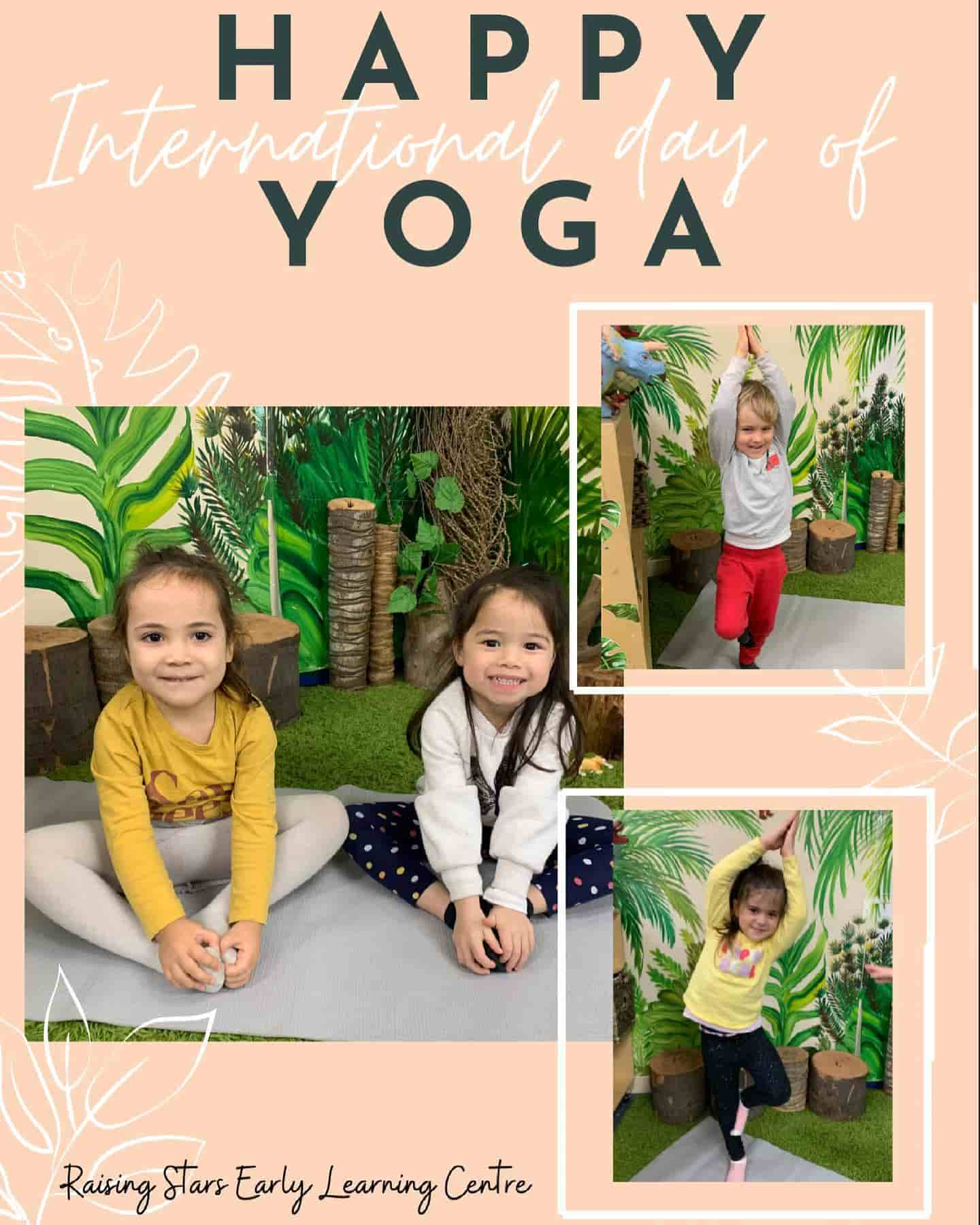
Kids Yoga Near Me with Raising Stars
Raising Stars are proud to have a structured kids yoga program within our early years learning curriculum. Our holistic approach, combined with the rigid implementation of the Early Years Learning Framework, help children flourish in their worlds and prepare them for their following stages in life at school.
We offer kids yoga programs at our Gregory Hills and Five Dock early years learning centres. For more information, contact us today at 1800 84 88 86 or by email at info@raisingstars.com.au.
